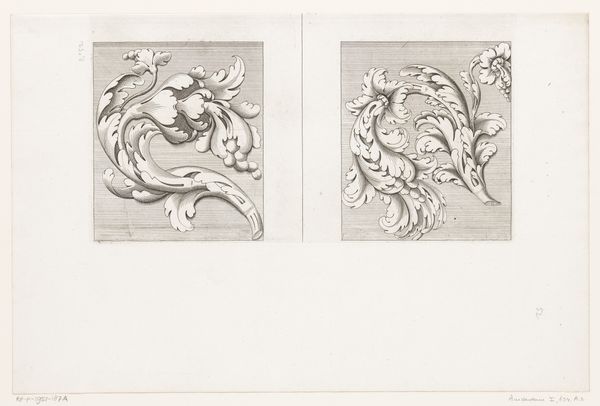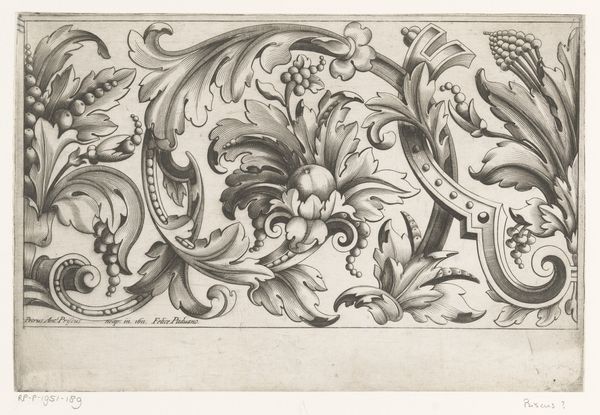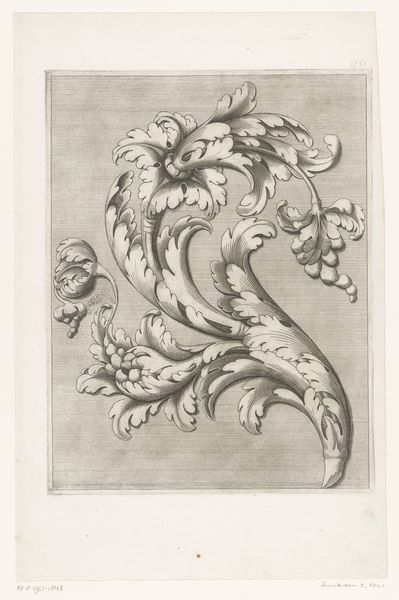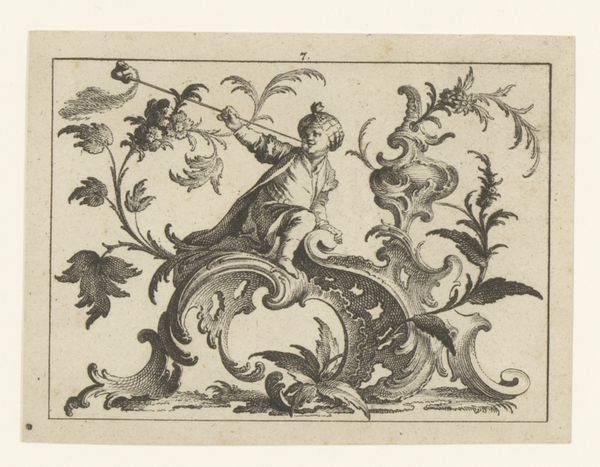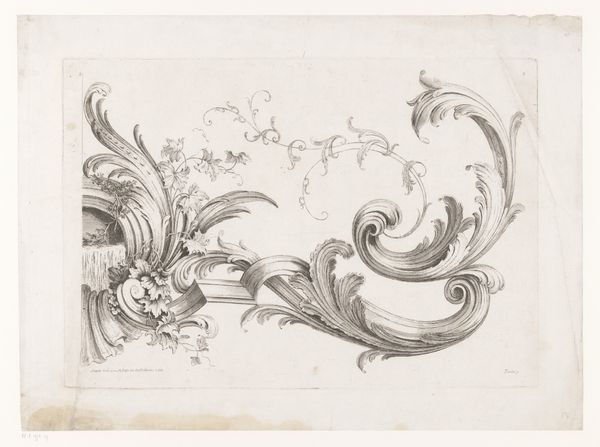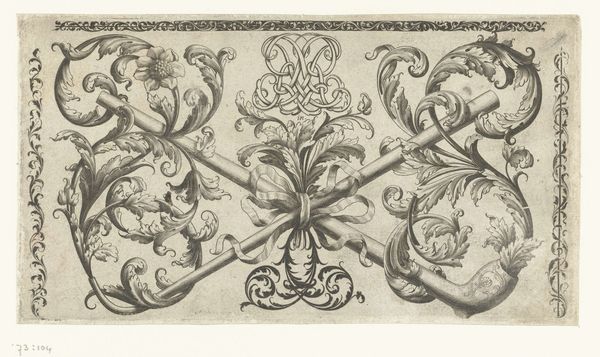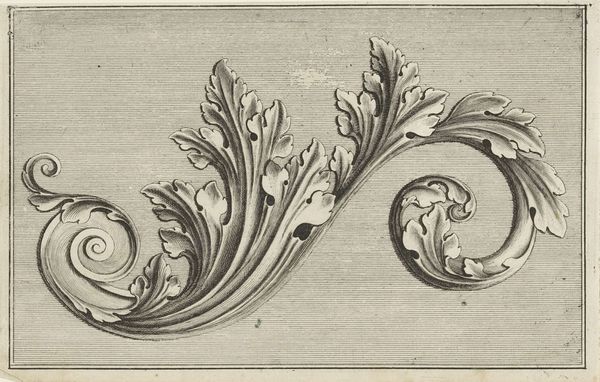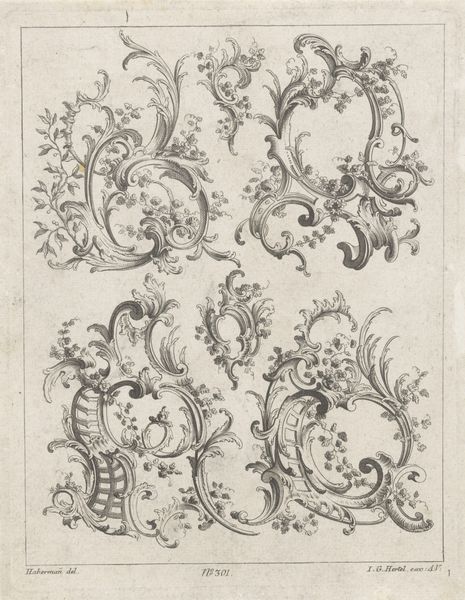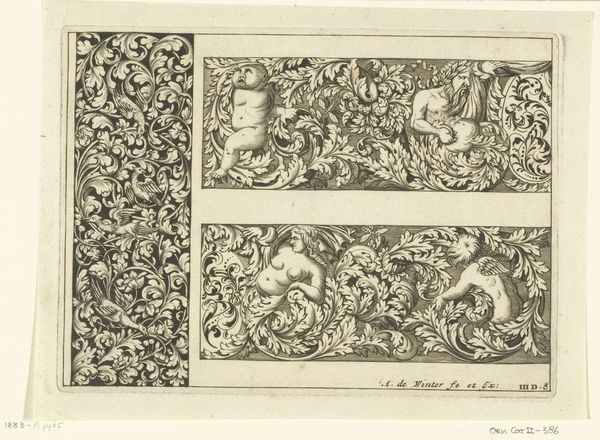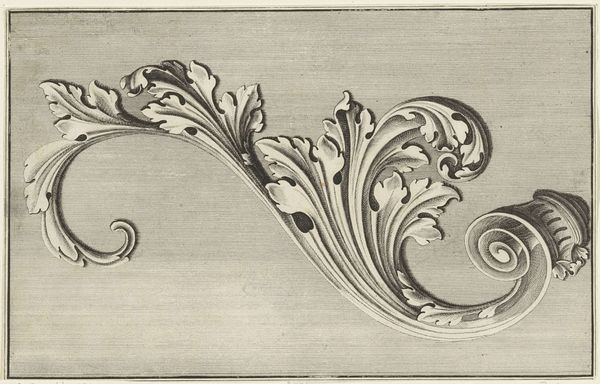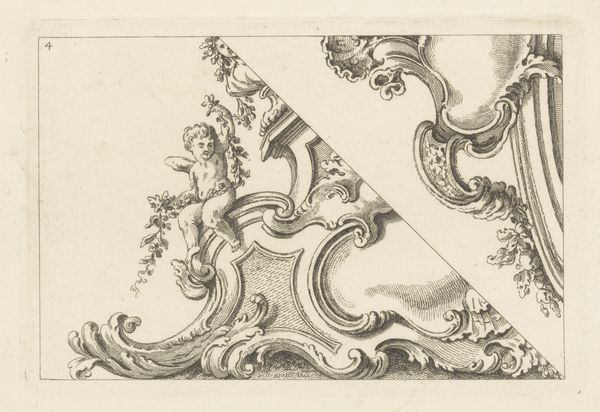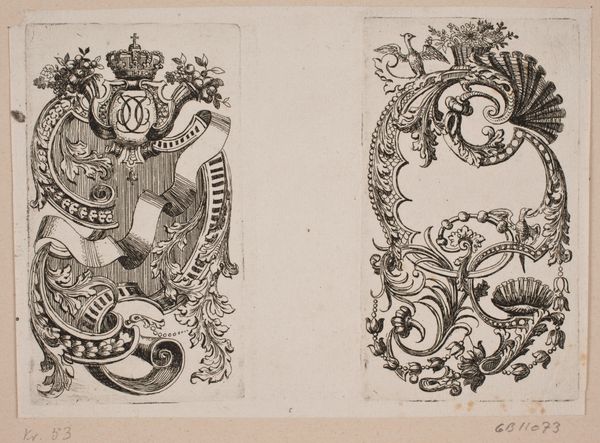
drawing, print, etching, engraving
#
drawing
#
ink paper printed
# print
#
etching
#
etching
#
11_renaissance
#
linocut print
#
ink drawing experimentation
#
pen work
#
engraving
Dimensions: height 156 mm, width 282 mm
Copyright: Rijks Museum: Open Domain
Curator: Take a look at these, "Acanthusmotieven in knopvorm", or Acanthus Motifs in Bud Form, created sometime between 1589 and 1614. They’re housed here at the Rijksmuseum. They appear to be prints—etchings and engravings— likely by Cesare Domenichi. Editor: The crispness of the lines is remarkable! Even without color, there's a definite sense of volume; the leaves curl and unfurl in such a dynamic way. There is a very elegant effect within these miniature forms. Curator: Indeed. These served primarily as models for artisans. Think of the rise of Mannerism, with its focus on elegance and ornamentation. Prints like these offered readily available designs for sculptors, goldsmiths, and other decorative artists needing to keep up with fashionable styles. It was about disseminating these highly stylized forms into the wider material culture. Editor: That explains the meticulous detail! Looking closely, the almost mathematical precision in the rendering of the acanthus leaves creates a sense of formalized beauty rather than raw naturalism. Note how they spring organically yet are so perfectly constrained within these tight rectilinear borders. Curator: Precisely! The prints also underscore how artistic ideas were spreading across Europe. Domenichi, who was active in Italy, clearly responded to, and further contributed to, the vogue for elaborate decorative schemes. These images also provided accessible tools to support economic mobility. Editor: Thinking of semiotics, it's clear how the acanthus leaf, traditionally associated with classical antiquity, gets completely reimagined through this contemporary, Mannerist lens. Its inherent symbolism is transformed, shifting from purely symbolic content towards complex aesthetic exploration. Curator: And it wasn’t just aesthetics. The demand for such designs highlights the increasingly competitive market for luxury goods, fueling the development and dissemination of such stylized motifs. The function of the object shifts to include that sense of status. Editor: Seeing how technique and form interact like this allows me to appreciate how carefully orchestrated visual systems such as this still carry enduring appeal centuries later. Curator: Agreed, looking at these reminds me how artworks operate within specific economies of exchange, acting not just as beautiful images but also tools.
Comments
No comments
Be the first to comment and join the conversation on the ultimate creative platform.
